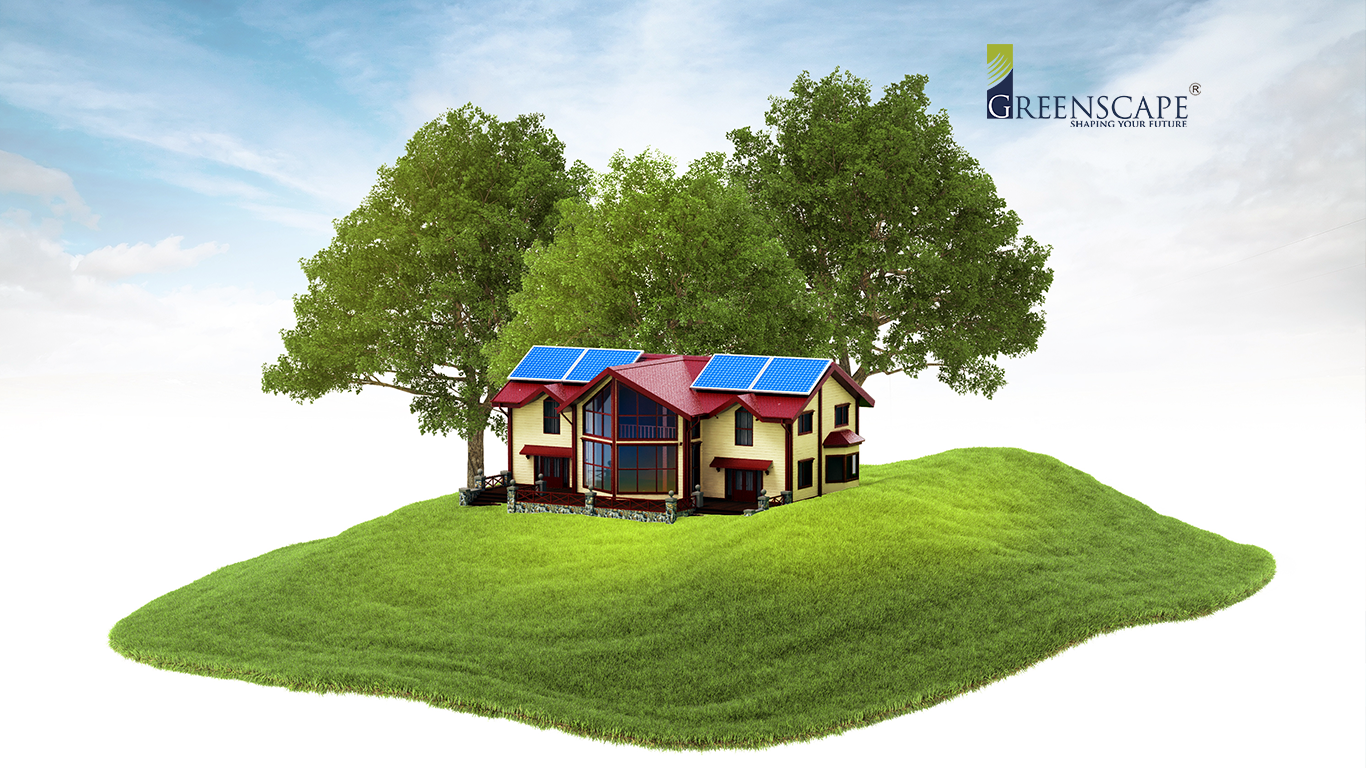Now Reading: Sustainable Real Estate Investments: Achieving Best Financial & Impact Returns
-
01
Sustainable Real Estate Investments: Achieving Best Financial & Impact Returns
Sustainable Real Estate Investments: Achieving Best Financial & Impact Returns

Table of Contents
Sustainable real estate investments represent a rapidly evolving and increasingly essential segment of the global investment landscape. Driven by mounting environmental concerns, evolving social expectations, and stringent governance requirements, investors are moving beyond traditional financial metrics to integrate Environmental, Social, and Governance (ESG) criteria into their decision-making processes. This paradigm shift, actively shaping the market in mid-2025, is redefining what constitutes a “good” investment, prioritizing long-term value creation that harmonizes financial returns with positive planetary and societal impact.

Defining Sustainable Real Estate Investments
Sustainable real estate investments are fundamentally about aligning capital with properties and portfolios that demonstrate strong ESG performance throughout their lifecycle. This extends beyond merely “green buildings” to encompass a broader spectrum of considerations:
- ESG Integration: At its core, sustainable real estate investing systematically integrates ESG factors into every stage of the investment process – from due diligence and acquisition to asset management and divestment. This means evaluating a property’s energy efficiency, water usage, waste management, social impact on tenants and communities, and the transparency and ethics of the managing entities.
- Impact Investing: While ESG integration often focuses on mitigating risks and enhancing returns through sustainable practices, impact investing in real estate specifically aims to generate measurable, positive social and environmental impact alongside financial returns. This could involve investments in affordable housing, social infrastructure (e.g., healthcare facilities, educational institutions), or projects revitalizing distressed communities.
- Future-Proofing Assets: Sustainable investments are inherently forward-looking. They aim to create assets that are resilient to future climate risks (e.g., extreme weather, resource scarcity), regulatory changes (e.g., carbon pricing, stricter building codes), and shifting market demands (e.g., tenant preference for healthier spaces).
Why Sustainable Real Estate Investments Are Gaining Traction

The ascent of sustainable real estate investments is fueled by several powerful trends:
- Growing Investor Demand and Pressure: Institutional investors, sovereign wealth funds, pension funds, and even individual investors are increasingly demanding that their capital be deployed responsibly. ESG mandates are becoming standard practice, driven by fiduciary duties, stakeholder expectations, and a recognition that sustainability factors are material to long-term performance. Funds with strong ESG credentials are attracting significant capital inflows.
- Regulatory Imperatives: Governments and financial regulators worldwide are implementing policies to accelerate climate action and promote sustainable finance. This includes mandatory climate-related financial disclosures (e.g., TCFD recommendations), carbon pricing mechanisms, stricter building energy codes, and sustainable finance taxonomies (e.g., EU Taxonomy), pushing real estate towards decarbonization and social responsibility.
- Enhanced Financial Performance: Empirical evidence increasingly demonstrates that sustainable properties often outperform their conventional counterparts. They typically benefit from lower operating costs (due to energy and water efficiency), higher occupancy rates, premium rents, and higher capital values. Studies in 2025 continue to show that green-certified buildings can command significant rental and sales premiums.
- Risk Mitigation: Integrating ESG factors helps investors identify and mitigate various risks:
- Physical Risks: Protecting assets from climate-related events (flooding, wildfires, extreme heat).
- Transition Risks: Avoiding “stranded assets” that become financially unviable due to policy changes or technological disruptions (e.g., high-emission buildings).
- Reputational Risks: Safeguarding brand image and avoiding negative publicity associated with unsustainable or unethical practices.
- Litigation Risks: Reducing exposure to lawsuits related to environmental damage or social harm.
- Reputation and Brand Enhancement: Companies and funds that visibly commit to sustainability build stronger reputations, attract top talent, and resonate with a growing base of environmentally and socially conscious customers.
- Innovation and Technology: The drive for sustainability fosters innovation in green building technologies, smart property management systems, and renewable energy solutions, creating new investment opportunities and enhancing asset efficiency.
Key Pillars of Sustainable Real Estate Investment
Applying the ESG framework to real estate investment involves specific considerations for each pillar:
- Environmental (E):
- Energy Performance: Investing in properties with high energy efficiency (e.g., LEED Platinum, BREEAM Outstanding, net-zero carbon buildings), onsite renewable energy generation (solar, geothermal), and smart energy management systems.
- Water Management: Projects incorporating rainwater harvesting, greywater recycling, efficient irrigation, and low-flow fixtures.
- Waste Reduction & Circularity: Investing in properties designed for minimal waste generation, utilizing recycled/recyclable materials, and embracing circular economy principles in construction and operations.
- Pollution Prevention: Avoiding investments in sites with high pollution risks and ensuring responsible management of hazardous materials.
- Biodiversity & Ecosystem Protection: Prioritizing greenfield sites that preserve natural habitats or brownfield redevelopments that revitalize degraded land.
- Climate Resilience: Assessing and investing in properties resilient to current and projected climate impacts, such as flood-resistant designs or enhanced cooling systems for extreme heat.
- Social (S):
- Health & Well-being: Investing in properties that prioritize occupant health through superior indoor air quality, natural light, acoustic comfort, biophilic design, and access to green spaces and amenities.
- Community Impact: Considering developments that create positive social value, such as affordable housing initiatives, mixed-income communities, local job creation, and infrastructure that supports community well-being.
- Accessibility & Inclusivity: Ensuring universal design principles are applied to make properties accessible to all, promoting equity and inclusion.
- Tenant/Resident Engagement: Fostering positive relationships with tenants and residents, offering sustainability programs, and ensuring fair practices.
- Supply Chain Ethics: Evaluating the social practices of contractors and suppliers, ensuring fair labor standards and human rights throughout the value chain.
- Governance (G):
- Transparent Reporting: Investing in companies or funds with robust and transparent ESG reporting practices, aligned with recognized frameworks (e.g., GRESB, SASB, TCFD).
- Ethical Leadership: Assessing the corporate governance structures, executive compensation aligned with ESG goals, anti-corruption policies, and board diversity.
- Regulatory Compliance: Ensuring strict adherence to all environmental, social, and labor laws and regulations.
- Stakeholder Engagement: Evaluating how well the investment manager or company engages with various stakeholders (investors, tenants, employees, communities) on ESG matters.
Types of Sustainable Real Estate Investments

The spectrum of sustainable real estate investments is broad and expanding:
- Green-Certified Buildings: Properties with formal certifications like LEED, BREEAM, WELL, or EDGE, signifying adherence to rigorous environmental and health standards.
- Renewable Energy Projects: Investments in land or infrastructure supporting solar farms, wind turbines, or geothermal energy, often integrated with real estate developments.
- Affordable and Workforce Housing: Investments focused on providing quality, sustainable housing solutions for low- to middle-income populations, addressing a critical social need.
- Social Infrastructure: Properties that support essential community services, such as healthcare facilities, educational institutions, and community centers, built to sustainable standards.
- Mixed-Use Developments: Projects that integrate residential, commercial, and recreational spaces, promoting walkability, reducing reliance on vehicles, and fostering vibrant communities.
- Urban Regeneration and Brownfield Redevelopment: Investing in revitalizing neglected or contaminated urban sites, reducing urban sprawl, and creating new sustainable communities.
- Climate-Resilient Infrastructure: Properties designed to withstand the impacts of climate change, often incorporating green infrastructure elements like permeable pavements, green roofs, and advanced stormwater management.
Benefits for Investors
- Superior Financial Returns: Lower operating costs (utilities, maintenance), higher occupancy rates, longer lease terms, and potential for rental and sales premiums contribute to enhanced Net Operating Income (NOI) and overall property value.
- Reduced Risk Profile: Mitigates risks associated with climate change, regulatory non-compliance, and reputational damage. Sustainable assets are often more resilient to market downturns.
- Enhanced Liquidity and Marketability: Growing demand from ESG-mandated investors and tenants makes sustainable properties more attractive, leading to faster transactions and broader market access.
- Access to Capital: Increased availability of “green finance” options, including green bonds, sustainability-linked loans, and preferential financing terms from banks and institutional lenders.
- Stronger Corporate Reputation: Positions investors and their portfolios as responsible leaders, enhancing their brand image and attracting new capital and talent.
- Compliance and Future-Proofing: Proactive alignment with evolving regulations and market trends reduces future compliance costs and safeguards asset value in a rapidly changing world.
Challenges and Opportunities
Challenges:
- Data Standardization and Availability: A persistent challenge is the lack of universally standardized ESG data and reporting across all asset types and regions, making direct comparisons difficult.
- “Greenwashing” Concerns: The proliferation of ESG claims necessitates robust due diligence and verification to distinguish genuinely sustainable investments from those with superficial commitments.
- Initial Investment Costs: While life-cycle cost savings are clear, the upfront capital expenditure for some deep green retrofits or net-zero new builds can still be higher.
- Valuation Methodologies: Integrating non-financial ESG metrics into traditional real estate valuation models requires evolving methodologies and greater appraiser expertise.
- Lack of Skilled Talent: A shortage of professionals with expertise in both real estate and sustainability can hinder effective implementation of ESG strategies.
Opportunities:
- Retrofitting Existing Buildings: A massive opportunity lies in upgrading the vast existing building stock to meet higher ESG standards, unlocking significant energy savings and value.
- Innovation in PropTech: The rapid development of property technology (PropTech) offers solutions for better ESG data collection, analysis, and building optimization, improving efficiency and transparency.
- Emerging Green Markets: Growth in developing economies and regions adopting stringent green building codes presents new investment frontiers for sustainable real estate.
- Partnerships and Collaborations: Opportunities to collaborate with sustainability experts, technology providers, and government entities to drive collective impact and share best practices.
- Specialized Funds: The rise of specialized ESG real estate funds and REITs provides accessible avenues for investors to enter this market.
Key Metrics and Reporting Frameworks
To assess and report on sustainable real estate investments, several widely recognized frameworks and metrics are employed:
- GRESB (Global Real Estate Sustainability Benchmark): A leading global standard for assessing the ESG performance of real estate and infrastructure portfolios and assets. It provides comparative data and benchmarks.
- Green Building Certifications (LEED, BREEAM, WELL, EDGE): These certifications provide verifiable third-party assessments of a building’s environmental performance (LEED, BREEAM, EDGE) and its impact on human health and well-being (WELL).
- TCFD (Task Force on Climate-related Financial Disclosures): Offers recommendations for companies to disclose climate-related financial risks and opportunities, increasingly relevant for real estate investors.
- SASB (Sustainability Accounting Standards Board): Provides industry-specific disclosure standards, including for real estate, focusing on financially material sustainability information.
- GRI (Global Reporting Initiative): A comprehensive framework for sustainability reporting that helps organizations disclose their impacts on the economy, environment, and society.
- Science Based Targets initiative (SBTi): Helps companies set ambitious greenhouse gas emission reduction targets in line with climate science.
- Performance Metrics: Key performance indicators (KPIs) include energy use intensity (kWh/m²/year), water use intensity (m³/m²/year), waste diversion rates, tenant satisfaction scores, diversity metrics, and green lease clauses.
Future Outlook (2025/2026)
The landscape of sustainable real estate investments is poised for unprecedented growth and sophistication:
- Deepening ESG Integration: ESG factors will move beyond risk screening to become fundamental drivers of value creation and asset allocation strategies.
- Mandatory Disclosures: Expect a global trend towards more mandatory and granular ESG disclosures for real estate portfolios, driven by regulatory bodies and stock exchanges.
- Focus on Embodied Carbon: The industry will increasingly shift its attention from just operational carbon to embodied carbon emissions from construction materials and processes, accelerating demand for low-carbon materials and circular economy practices.
- Social Metrics Enhancement: The ‘S’ in ESG will gain more prominence, with investors demanding more robust metrics and tangible outcomes related to social equity, affordability, and community impact.
- AI and Data Analytics for ESG: Advanced analytics, AI, and digital twin technology will revolutionize ESG data collection, reporting, and predictive modeling for real estate, enabling more precise interventions and optimizations.
- Circular Economy Real Estate: Greater adoption of circular economy principles, promoting material reuse, modular construction, and designing for deconstruction to minimize waste and maximize resource efficiency.
- Broader Green Finance Products: The market for green bonds, sustainability-linked loans, and other innovative financial instruments tailored for sustainable real estate will continue to expand.
- Resilience as a Core Investment Criterion: As climate impacts intensify, assessing and investing in climate resilience will become a non-negotiable criterion for real estate portfolios.
In conclusion, sustainable real estate investments are no longer a niche market; they are becoming the standard for responsible and profitable capital deployment. By strategically integrating environmental, social, and governance principles, investors can unlock significant financial returns, mitigate critical risks, and contribute meaningfully to a more sustainable and equitable future. The momentum for sustainable real estate is irreversible, making it a cornerstone of long-term investment strategies globally.
WATCH MORE: https://www.youtube.com/watch?v=9rSCWnWmHwY
READ MORE: ESG Real Estate Compliance UAE: Driving Vital Sustainable Growth






















